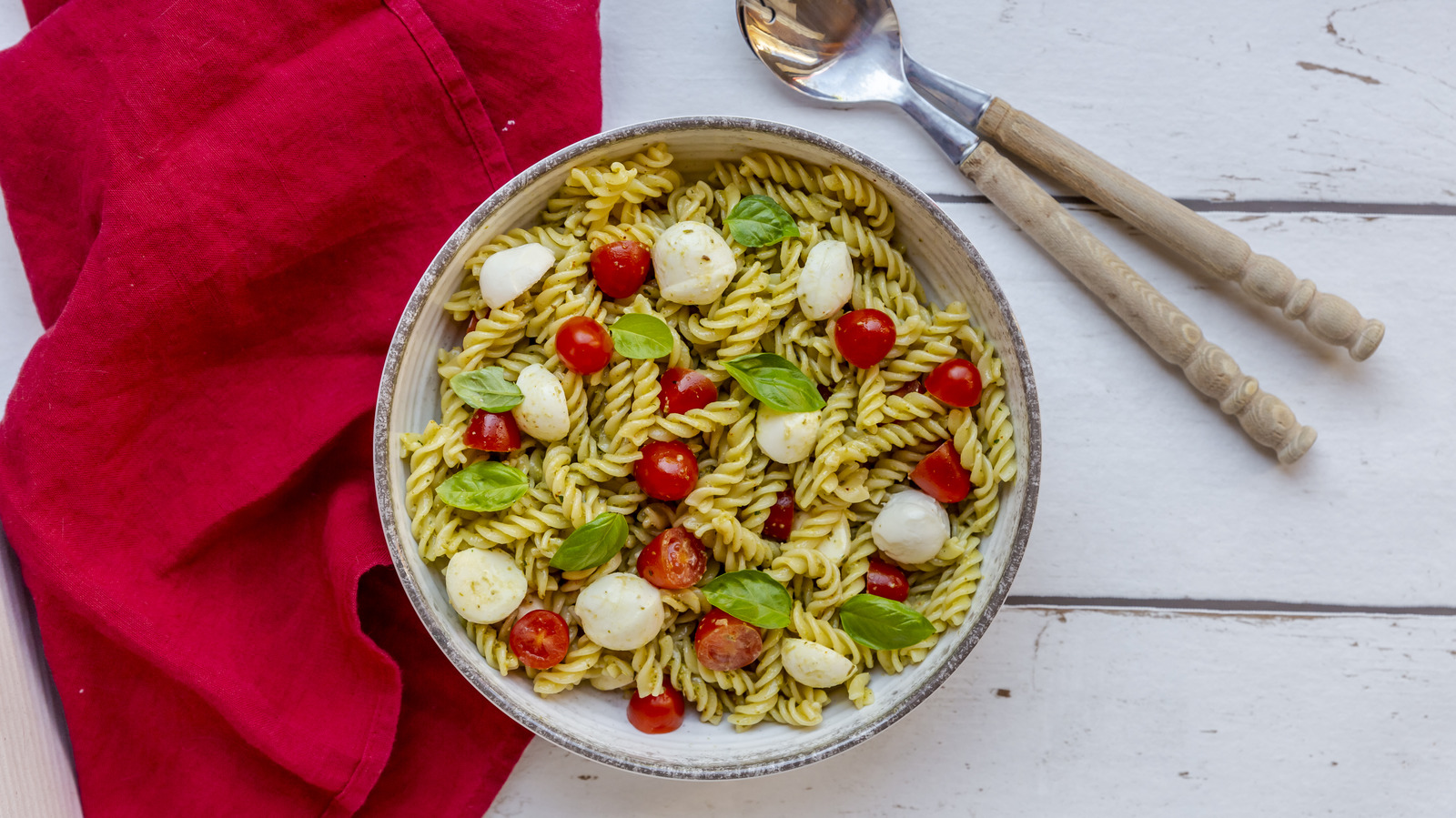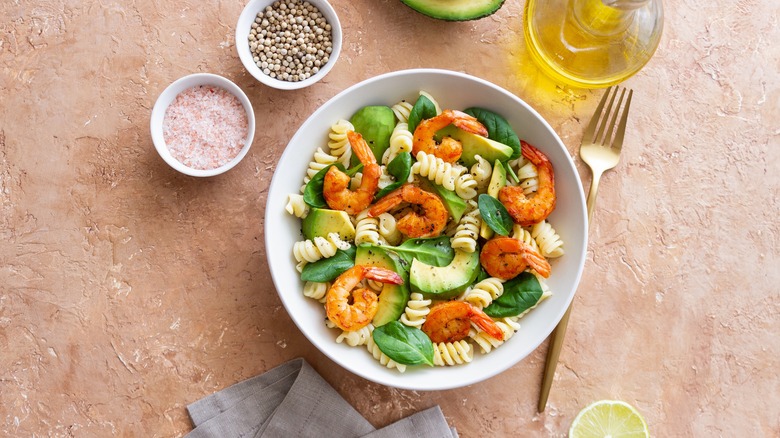Is there anything more comforting than a massive bowl of pasta after a long day at work? Whether a simple, classic bucatini cacio e pepe, or any of these 14 pasta dishes with fascinating origin stories, pasta really has a way of making you forget about even the toughest of days.
But what if there was a way to enjoy that salmon dill pasta salad while making it even healthier, too? All it takes is just a small change of mindset — and maybe a little temperature change, too. You see, chilling your pasta might just be the solution to an easy, nutritional dinner. Because, when you put it in the fridge for at least 24 hours, its natural starches transform into resistant ones. And no, this doesn’t mean the pasta will fight back when you try to eat it.
But hear us out here – resistant starches are actually a type of dietary fiber, and they come with some impressive health benefits. Boosting gut health, stabilizing blood sugar levels, and even aiding in weight loss are just a few of them. How does that bowl of pasta sound now? So tempting, right?
A smart trick for healthier carbs
Dry pasta is comprised of approximately 63% starch. But that amount drops down to only 26% after being cooked. It doesn’t quite come close to veggies like corn or potatoes, but it’s still a pretty solid number. This decrease in starch content happens because of a physical process called gelatinization, where the starchy molecules in the pasta begin to break down when cooked. This is where the pasta’s creaminess comes from — those starches release long chains of glucose as a result of the heat, which in turn, bind with water, fats, and proteins. This makes the digestion of hot pasta easier in the system.
But let’s say that instead of eating your pasta right away, you decide to place it in the fridge overnight. You may not realize it, but this is when an entirely new reaction begins — and that’s starch retrogradation. As the pasta begins to cool, those swollen and gelatinized starchy molecules start restructuring and releasing some of the water they previously absorbed. By the time the chilling process is over, they turn into resistant starches, which can be found in many plant-based foods, such as oats, lentils, and bananas.
Now slightly more difficult to digest, as their name suggests, resistant starches travel through the small intestine without breaking down. Once in the large intestine, they ferment and are utilized by the gut microbes, meaning they don’t add to blood glucose levels, ultimately making your pasta far healthier than before.





